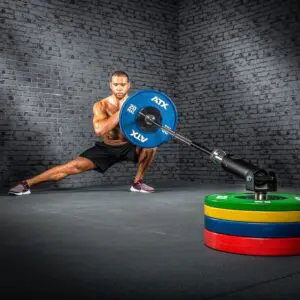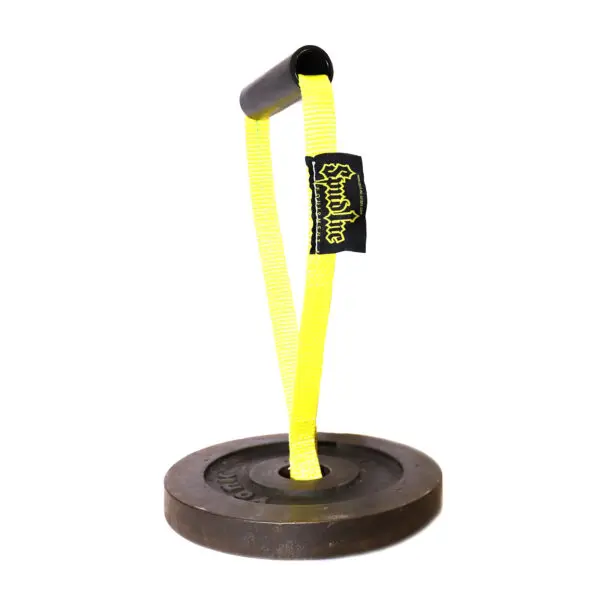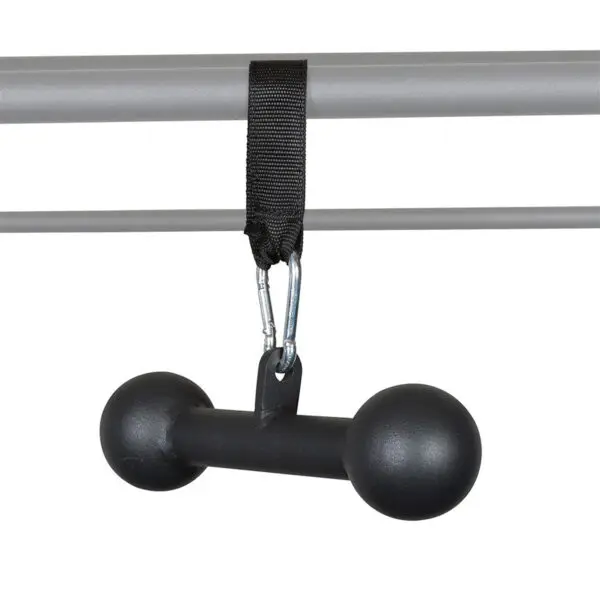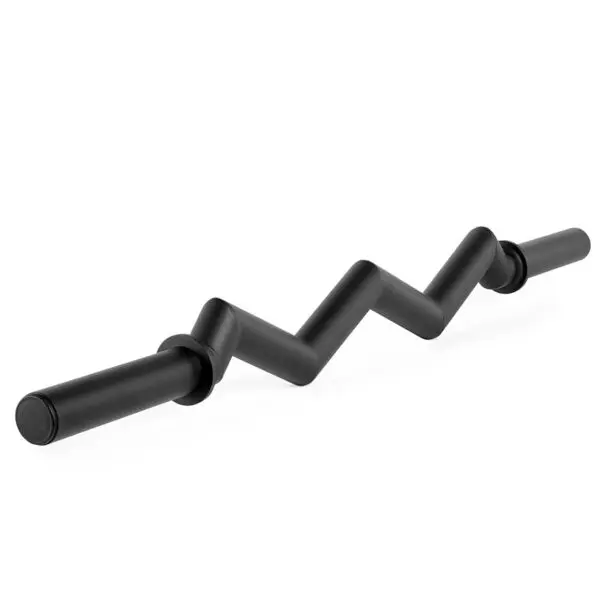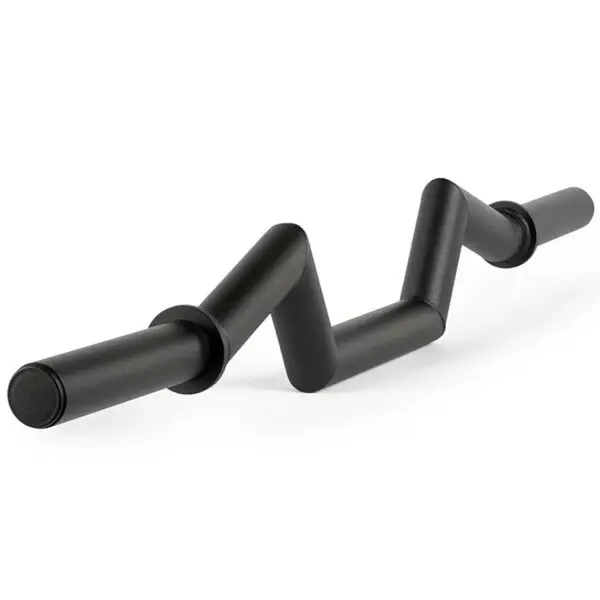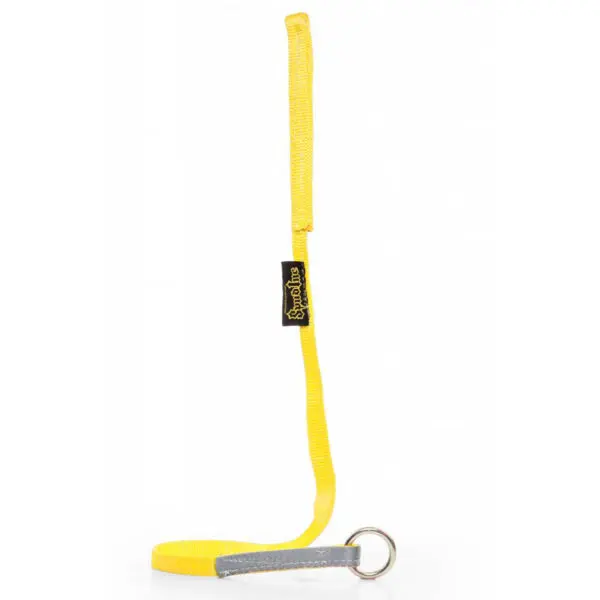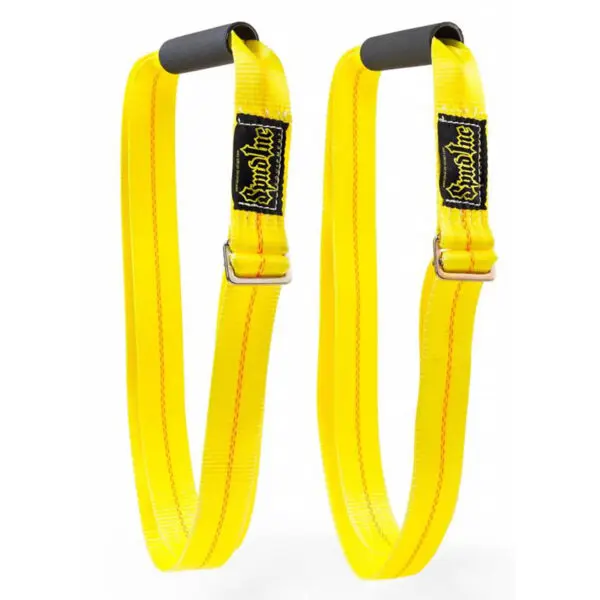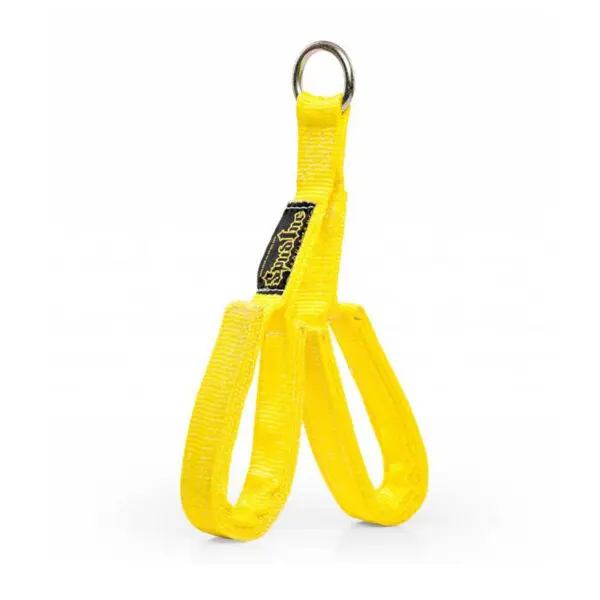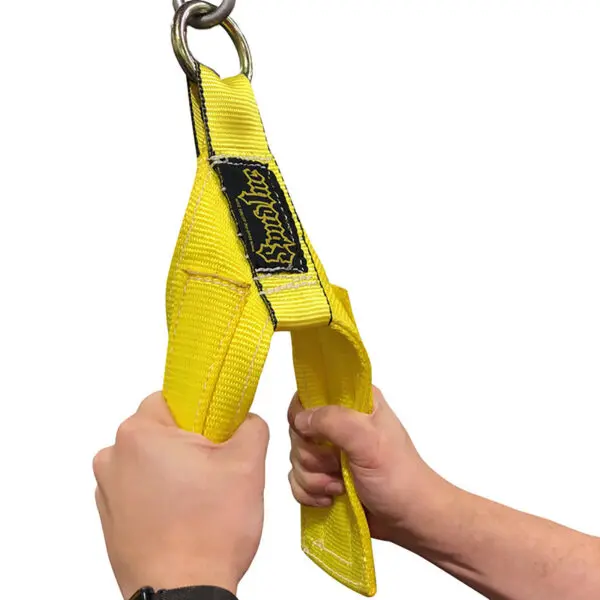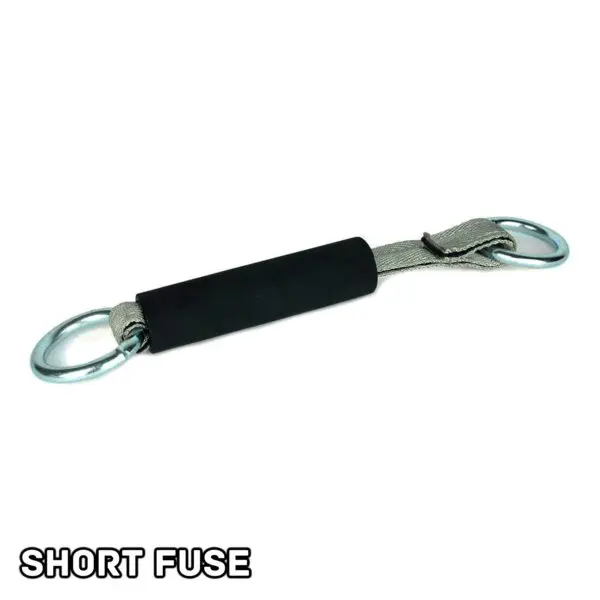
 GRIP STRENGTH Trainers To Develop Hand Strength
GRIP STRENGTH Trainers To Develop Hand Strength
Workouts and Implements For Real Crushing Power

Best Equipment for Grip Strength
-
Spud KettleStrap Kettlebell Strap
Price range: $69.00 through $95.00Select options This product has multiple variants. The options may be chosen on the product page -
Spud Inc Econo Hammer
$59.00Select options This product has multiple variants. The options may be chosen on the product page -
Spud Farmers Walk Handles
$160.00Select options This product has multiple variants. The options may be chosen on the product page -
ATX® Wrist Forearm Trainer
$55.00Read more
Frequently Asked Questions

 How can a strong grip benefit me?
How can a strong grip benefit me?
Before we go into how you can improve your grip strength, let’s talk a bit about the perks (and there are many!) of having a strong grip. A stronger grip means stronger lifts. Obviously it won’t help you squat more, but it will be an advantage for any pulling movement such as chin-ups, deadlifts, rows and pull-ups.
If you’ve ever had a hand cramp that got in the way of your last set, then you know just how important grip strength is. A stronger grip means higher endurance. Higher endurance means more reps, more sets and better gains!
A strong grip is a sign of strong muscles. Having a strong grip also means you’re less likely to get injured by a failing connective tissue or joint. We all know how devastating an injury can be to an athlete, and that’s why I urge you to train your forearm muscles to help prevent you from going into rehab!
But the benefits of a solid grip are not limited to your performance at the gym. When you’re training for a stronger grip, you’re also working on the joints of your wrists and fingers. This can give you a better outcome in the future, such as arthritis-free golden years.

 What are the types of grip strength?
What are the types of grip strength?
If you didn’t know that there are different types of grip and grip strength, be prepared for your mind to be blown. Every type of grip uses a different set of muscles.
- The crush grip is the type of grip strength where you grasp something with your hands closed. It’s the same type of grip you use when you shake someone’s hand or hold free weights.
- The pinch grip is the type of grip strength where you bring fingers to your thumbs in a sort of “alligator chomping” type of movement. It’s the same type of grip you use when you open container lids and throw an object. This type of grip demands strength from the tips of your fingers.
- The support grip is a lot like the crush grip, but here, you have to maintain the hold, or continue supporting the weight for a longer time. It’s the same type of grip you use when you do pull ups and carry shopping bags.
When you’re working on your grip, don’t make the fatal mistake of forgetting about your wrists. Wrist stability and movement are important because, as they say, a chain is only as strong as its weakest link. When you’re training for a stronger grip, you need to work out all of these muscles, including those in your wrists, to get the best results.
It’s probably a good idea to look at what normal grip strength is before we dive right into how we can improve it.

 What are the implications of normal grip strength?
What are the implications of normal grip strength?
For men, the normal grip strength values change with age, but not significantly (depending on your fitness levels, obviously). It’s important to know what your current grip strength is, so that you can set realistic goals for yourself.
All grip strength ratings here are in kilograms:
| Age | Weak | Normal | Strong |
| 10-11 | < 12.6 | 12.6 – 22.4 | > 22.4 |
| 12-13 | < 19.4 | 19.4 – 31.2 | > 31.2 |
| 14-15 | < 28.5 | 28.5 – 44.3 | > 44.3 |
| 16-17 | < 32.6 | 32.6 – 52.4 | > 52.4 |
| 18-19 | < 35.7 | 35.7 – 55.5 | > 55.5 |
| 20-24 | < 36.8 | 36.8 – 56.6 | > 56.6 |
| 25-29 | < 37.7 | 37.7 – 57.5 | > 57.5 |
| 30-34 | < 36.0 | 36.0 – 55.8 | > 55.8 |
| 35-39 | < 35.8 | 35.8 – 55.6 | > 55.6 |
| 40-44 | < 35.5 | 35.5 – 55.3 | > 55.3 |
| 45-49 | < 34.7 | 34.7 – 54.5 | > 54.5 |
| 50-54 | < 32.9 | 32.9 – 50.7 | > 50.7 |
| 55-59 | < 30.7 | 30.7 – 48.5 | > 48.5 |
| 60-64 | < 30.2 | 30.2 – 48.0 | > 48.0 |
| 65-69 | < 28.2 | 28.2 – 44.0 | > 44.0 |
| 70-99 | < 21.3 | 21.3 – 35.1 | > 35.1 |
Source: TopEndSports.com
If you’re able to grip heavier weights than the amounts above, you’ve got a strong grip so you should be able to push yourself a little harder. If, on the other hand, your grip strength falls on the weak category, start off slowly until you get to the normal and strong level.
There are also different ways to measure your grip strength. One way is with a handgrip dynamometer. You just need to sit down on a chair with back support, keep your feet firmly planted on the floor, put your arms on your sides, bend your elbow and hold this equipment with one hand so it’s at a 90-degree angle. Then you’ll squeeze as hard as you possibly can for two to three seconds.
You can also use a weight scale to measure your grip strength. You just need to hold it like how you’d hold a weight–with the heel of your hand on the top of the scale and your fingers wrapped around the bottom, then push down as hard as you can.
Remember, there are many things that could affect your grip strength, and some of these things change from day to day. These include how well you feel, your energy levels, how much you’ve been using your hands throughout the day and whether you have an underlying health condition.

 What are the basic grip strengthening rules for beginners?
What are the basic grip strengthening rules for beginners?
Before I jump into this, I just want to remind you that everyone is different. Your abilities and the amount of weight that you can take before you hurt yourself is not the same as someone else’s. I just want to make sure that you know why you must listen to your body and that you really need to stop when it tells you to stop.
With that being said, let’s get this party started with some basic rules for beginners:
1. Start Slowly
The best way to start strengthening your grip is to make some small changes to your regular routine so that they are more “grip-focused”. For example, you can use a towel as your handle during your rowing exercises so you’re pushing your arm muscles to work harder to maintain your grip.
Then start off with two more intense grip-focused lifts each week. Once you have two weeks under your belt, move onto two sessions a week where you’re doing grip-specific lifts in your routine. Build on this when you’re ready.
2. Don’t Overdo It
Are you working on your grip lifts separately from your workout routine? Make sure you don’t overdo it. Doing about 3 to 5 sets of 3 to 5 reps each when you’re doing the Two Hands Pinch, for example, is more than enough to get you where you need to go.
3. Don’t Forget the Extensors
Remember those muscles we talked about earlier? The ones you use to open your hands? Well, you might not realise it, but they are important in strengthening your grip too, so don’t forget about them. You can work on them in front of the television using nothing more than a rubber hand around your thumb and forefinger. Open your hand against this resistance. If you can do more than 20 reps, add another rubber band.

 What exercises can I do to improve my grip strength?
What exercises can I do to improve my grip strength?
Now let’s move onto the exercises you can do to improve your grip strength.
1. Dumbbell head grab
Place the dumbbell vertically/on its head and then pick it up by the head. Don’t get too cocky and lift a dumbbell that’s too heavy for you. Hold this for about 30 seconds and if that’s too easy, opt for a heavier weight.
2. Farmer’s walks
This exercise sounds fancy, but it’s really very simple: you just need to walk around with a heavy pair of dumbbells. If you can hold them for longer than 30 seconds, switch them for heavier weights. If you don’t have the space to walk around, that’s not the end of the world. Just hold them while you are in a standing position.
3. Plate curls
This one is going to improve the strength of your wrists and biceps. For beginners, I recommend you do at least 10 reps. But no matter how many reps you decide to do, just make sure you don’t hit yourself in the face with the plate.
4. Plate pinches
You need a pair of smooth plates with the same diameter for this one. Stick the two plates together and then pick them up with a single pinching motion. This one is really great for your grip strength but remember not to overdo it. If you can’t pinch both plates, just pinch one plate at a time.
5. Towel chin-ups
If your regular chin-ups just aren’t doing it for you anymore, hang a towel over the bar and then try doing your chin-ups with that!
If you have access to some stretch bands–either at the gym or at home–you can really up your grip game. This is because the band actually opens up your wrist joints. Make sure that your fingers are facing the opposite way of the band’s pull. Doing between 10 and 15 of these will really get your muscles warmed up.

 What exercise equipment helps improve my grip strength?
What exercise equipment helps improve my grip strength?
Now that we’ve gone over the exercises you can do to improve your grip strength, let’s talk about the equipment that can help you get there.
1. The grip trainer
This equipment is pretty self-explanatory. You take the gripper and squeeze it in the palm of your hand. We sell varying weights of grippers, from 100-250lbs of resistance, so they are suitable for any level of trainer.
2. Fat Grips
Remember how we discussed different types of grip strength? To grip something wider than a traditional barbell, you’re going to need more pinch grip as your hand won’t wrap completely around it. To train your pinch grip, simply use a thicker accessory! For one arm cable exercises the ATX Conic Fat Grips work a treat, and for two arm cable exercises the Dog Bone Handle is excellent.
3. Resistance bands
Resistance bands come in sets of different tension levels. The level of resistance they offer ranges from about 2 to 26 kilograms. These babies are great because they are lightweight and really portable–you can take them just about anywhere!
Just like the hand grippers, these aren’t just for improving your grip strength. If you have an injury, they’re also great for rehab.
4. Straps
We’re obviously not talking about the traditional wrist straps here! Spud Inc developed the fat triceps strap especially to target the forearm and hand muscles. For use on any cable machine, the strap provides a unique way to grip which is bound to get you a good pump. </ span>
Grip strength is very important to your overall health, and it absolutely helps improve your weight lifting performance. If you’re not doing everything you can to improve it, the question is: why not?

 Do Grip Trainers Grow Forearms?
Do Grip Trainers Grow Forearms?
Yes, using grip trainers CAN grow your forearms. However, they might not be the best for aesthetics, nor optimal for growth. You see, grip trainers primarily grow the deep, non-visible muscles in your forearms. These muscles have a lot of potential for strength, but not a lot for growth.
In fact, the forearms in general are highly resistant to resistance training because they get used all the time during daily life. So, if you want a stronger grip, use grip trainers. However, if your main goal is to build impressive, big looking forearms, free weight isolation and compound exercises will yield the best results.
Exercises including the reverse curl, hammer curl, weighted pullup and machine curl variations are likely your best bet. These exercises are tried and true for building impressive looking arms. From my research no bodybuilder has ever credited grip tools as the reason behind their massive forearms, so keep that in mind.

 Do Calluses increase Grip Strength?
Do Calluses increase Grip Strength?
Not really. Calluses are just built-up clumps of skin caused by holding a heavy weight against gravity. Exercises like straight bar deadlifts and pullups are notorious for causing calluses to form. Both exercises require us lifting a large amount of weight suspended from our hands (either the barbell or our own bodyweight).
The more often you lift, and the heavier you lift, the more likely you’ll develop calluses. They are just a by-product of training, and often no real advantage or disadvantage.
Where calluses can hinder your training is:
a. if they rip and tear, which is painful (but not too common)
b. if they get too big and prevent you from gripping the bar in a good position (again, this is rare).
For the most part, if you just train with good form, you’ll get mild calluses which won’t affect your training at all. Don’t stress about them, they’re a sign of hard work.

 Do pullups Increase Grip Strength?
Do pullups Increase Grip Strength?
YES. Pullups increase grip strength – you’re holding your whole bodyweight using (primarily) your forearms! There’s a reason calisthenics athletes have nicely developed, well-defined arms despite not doing free weight curls. Hanging from a barbell and doing pullups will tax all the muscles in your forearms, not to mention your back and core.
To stop yourself from slipping, you’ll need a very strong grip, the same kind of strength required to deadlift heavy weights without straps. There are also many different variations of pullups to improve your grip over multiple positions. You can do pullups with a normal thumb-under grip, or you can do them with a thumb-over, ‘suicide’ grip.
You can use multiple grip positions, including pronated, supinated, and neutral. To further increase the load, you can add weight to yourself with a dip belt. Just hanging from a bar for 5 total minutes in a session (broken up into as many sets as needed to reach 5 total minutes) will burn the heck out of your grip and forearm muscles.
So, if you want an easy way to build good grip strength, do pull-ups and chin-ups. It’s that simple.

 Does Cracking your Knuckles reduce Grip Strength?
Does Cracking your Knuckles reduce Grip Strength?
No, cracking your knuckles does NOT reduce grip strength. It’s a myth that cracking your knuckles is bad – you are not rubbing bone against bone. When you crack your knuckles, you’re just popping the little air bubbles in between your joints. These air bubbles will come back shortly after cracking them.
However, if you find cracking your knuckles to be painful, or it becomes an excessive/bad habit, stop doing them. This is mainly just for your overall physical and mental wellbeing, and discipline. But if you enjoy cracking your knuckles, and can do so without any pain, it should be fine. It won’t affect your grip strength positively or negatively.

 Does Lifting Weights increase Grip Strength?
Does Lifting Weights increase Grip Strength?
YES – lifting weights will improve your grip strength. To improve your grip strength, you need to lift heavy things often. If you want to improve your grip strength even further, you need to progress to lifting even heavier things (over time). For example, you could hold a 20kg barbell down in front of your body, and once you can do that for 30 secs, increase the weight to 30kg, until you can hold it for 30 secs, then repeat with 40kg etc, increasing the weight progressively.
Keep in mind if you don’t have access to a gym, or specialised grip training implements, you don’t need fancy equipment to improve grip strength. If you work in a trade job, for example, lifting heavy objects like bricks and planks of wood, or using tools like a hammer or shovel, will improve grip strength in a functional (real-life) way.
Gym-based grip training tools are just another way you can improve grip strength. And keep in mind, the best exercise to train your grip is the one you want to get better at. If you want to improve grip strength for a specific physical task, doing exercises in the gym can help. You’ll get the best results just by doing they specific physical task you’re trying to get better at. This is called the ‘Law of Specificity’.
If you want good general grip strength, or don’t have a labour-intensively job, free weight exercises and implements will do the job nicely.

 How do you measure Grip Strength?
How do you measure Grip Strength?
There’s lots of ways to measure grip strength, but the most important one for you to measure will be the one that aligns with your goals. If you want to be able to deadlift 100kg without straps, you’ll know that your grip strength has improved if you could only do 50kg in the beginning and can now do 80kg. If you want to get better at grippers, if you could only do the lighter resistance to start with, you’ll know you have made progress when that becomes easy.
In general, a ‘dynamometer’ is used to standardise grip strength measurements. You’d grip the device as hard as you can, and the higher the number, the greater your grip strength. But there’s a lot of individual factors in what makes a grip strong, so in my opinion, those test scores don’t matter.
The best way you can measure your grip is with noticing progress in your training. If you are achieving or getting closer to achieving your grip goals over time, that is a good way of measuring/knowing you are making progress.

 Does masturbation affect your Grip Strength?
Does masturbation affect your Grip Strength?
Hopefully not, lol… In all seriousness, in simple terms, no, masturbation will not really affect your grip strength.
If you masturbate, you will not magically lose all the strength you’ve developed in your grip and your whole body. The only time where masturbating might affect your grip is if you forget to wash them after FINISHING a hard session. Or if you’ve tossed too much in one day and now feel like you have no energy to train.
If you don’t want a cheeky session to affect your grip, it’s best to save your party of one for after your gym sessions (immediately after if you’re that stimulated, but any time is fine).
Masturbation will not reduce your testosterone, nor will it make your hair fall out. The men with the best bodies and/or the best hair are probably getting the most girls. In theory probably having the most ejaculatory experiences.
So don’t stress about this too much – just make sure you’re training, and your grip strength will be fine.
Grip Strength Training Tips


Which Weight Plates Should You Buy? A Simple Guide for the Average Lifter

ATX-PRX-620 Power Rack Comparison
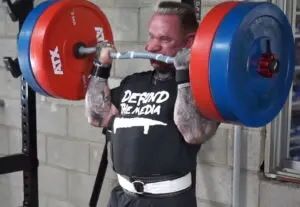
25 EZ Curl Bar Exercises
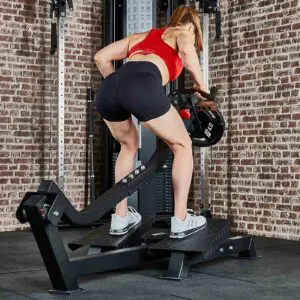
T-Bar Row Options Without a Machine
